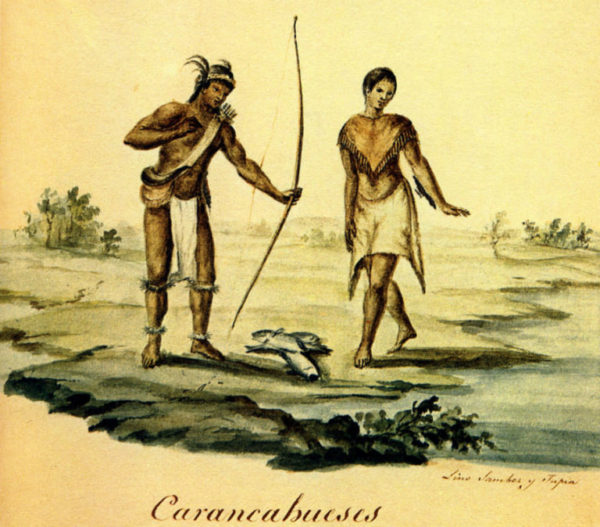 Last updated: August 15, 2023
Last updated: August 15, 2023
In September 2020, I enrolled in a virtual class – a series of Zoom meetings to discuss the possibilities for gesturing towards de-colonial futures, and when I wrote this, I had just attended the first 2-hour segment. There were 5 additional meetings over the course of the next year – one every two months – in conjunction with a group called Sisters of Earth Emerging. My first “assignment” was to discover more about the indigenous people who once lived where I currently reside. As a kid, I lived in Ohio, California, and finally Texas. Because of all of this moving around, I somehow managed to get through middle school and high school without having to take any state history classes, which was unfortunate. I really love learning about history and so I’ve decided to take a quick dive into early Texas history to learn more about the native people who used to live in what is now the Houston area. Reader alert: as it turns out, I was curious, and so the historical dive wasn’t as quick as I had originally intended.
Indians called the Karankawa lived along the coast of the Gulf of Mexico, between Galveston Bay and Corpus Christi and sweeping inland perhaps for about 100 miles. They were a nomadic Native American tribe that consisted of five main subgroups, related by language and culture: the Karankawa proper (Carancaquacas,) the Capoques (Coaques, Cocos,) the Kohanis, the Kopanes (Copanes), and the Guapites. Only about 100 words of their language were preserved, and some linguists think that the name “Karankawa” may mean “dog lovers.”
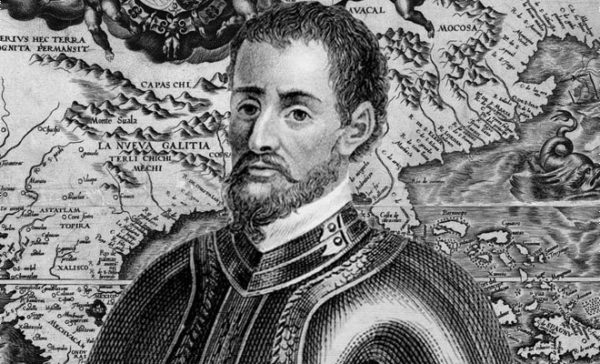 The Karankawa travelled in groups of 30-40 people and depended on fishing, harvesting shellfish, hunting, and foraging/gathering for their food. They moved around the shallow bays and lagoons of the central Texas coast in large dugout canoes, each of which could hold an entire family and their goods. They lived in portable wig-wams and migrated seasonally between the barrier islands and the mainland, according to food availability and for reasons of climate. It is also known that they used alligator or shark grease mixed with dirt to repel mosquitoes. The Karankawa were unusually tall and had exceptional archery skills, using long bows made from red cedar that spanned the distance from eye or chin level nearly to the foot of the person using it. They were heavily tattooed and fierce warriors who often fought against the Comanches.
The Karankawa travelled in groups of 30-40 people and depended on fishing, harvesting shellfish, hunting, and foraging/gathering for their food. They moved around the shallow bays and lagoons of the central Texas coast in large dugout canoes, each of which could hold an entire family and their goods. They lived in portable wig-wams and migrated seasonally between the barrier islands and the mainland, according to food availability and for reasons of climate. It is also known that they used alligator or shark grease mixed with dirt to repel mosquitoes. The Karankawa were unusually tall and had exceptional archery skills, using long bows made from red cedar that spanned the distance from eye or chin level nearly to the foot of the person using it. They were heavily tattooed and fierce warriors who often fought against the Comanches.
 The Karankawa’s first contact with Europeans occurred in 1528 when two small boats of survivors of the shipwreck of a Spanish expedition led by Pánfilo de Narváez landed on a small island to the west of Galveston Island. Álvar Núñez Cabeza de Vaca, one of the survivors, lived with the Karankawa for several years and provided the earliest written ethnograhic account of the coastal people.
The Karankawa’s first contact with Europeans occurred in 1528 when two small boats of survivors of the shipwreck of a Spanish expedition led by Pánfilo de Narváez landed on a small island to the west of Galveston Island. Álvar Núñez Cabeza de Vaca, one of the survivors, lived with the Karankawa for several years and provided the earliest written ethnograhic account of the coastal people.
 They encountered Europeans again in 1685, when a French expedition, led by René Robert Cavelier, Sieur de La Salle, stole canoes from the Karankawa and travelled upriver to establish Fort St. Louis near Matagorda Bay. When La Salle and some of his men left the community to find help for the struggling colony, the Karankawa Indians attacked the small remaining French village. All were killed except for five or six children who were taken captive and tattooed. In the early 1690s, members from a Spanish expedition were eventually successful in bargaining for the children’s release.
They encountered Europeans again in 1685, when a French expedition, led by René Robert Cavelier, Sieur de La Salle, stole canoes from the Karankawa and travelled upriver to establish Fort St. Louis near Matagorda Bay. When La Salle and some of his men left the community to find help for the struggling colony, the Karankawa Indians attacked the small remaining French village. All were killed except for five or six children who were taken captive and tattooed. In the early 1690s, members from a Spanish expedition were eventually successful in bargaining for the children’s release.
During the 18th century, the Spanish and French rivalries played out along the gulf coast. The Spanish attempted to civilize and Christianize the Karankawa, but violence ensued as they tried to force the natives into their missions. The missions Nuestra Señora de Loreta Presidio and Espíritu Santo de Zúñiga were established near the site of former Fort St. Louis. In addition, Nuestra Señora del Rosario de los Cujanes was established for the Karankawas in 1754 along the San Antonio River. And in 1791, Nuestra Señora del Refugio was built and then relocated three times before it was finally situated at Rancho de Santa Gertrudis, near the current site of the town Refugio. The Spanish continued to try to colonize the Karankawa throughout the 18th century, but in the end had very little success.
By the time the 19th century began, the Karankawa population was greatly reduced by disease, violence, and other effects of European colonists on the land. One especially violent confrontation took place in 1819 with Jean Laffite’s pirate colony on Galveston Island. Laffite’s men kidnapped a Karankawa woman, so the tribe assembled 300 warriors to attack the pirate’s band. However, Laffite had a force of 200 armed men and superior weapons, including two cannons that inflicted heavy losses and forced the Karankawa to retreat.
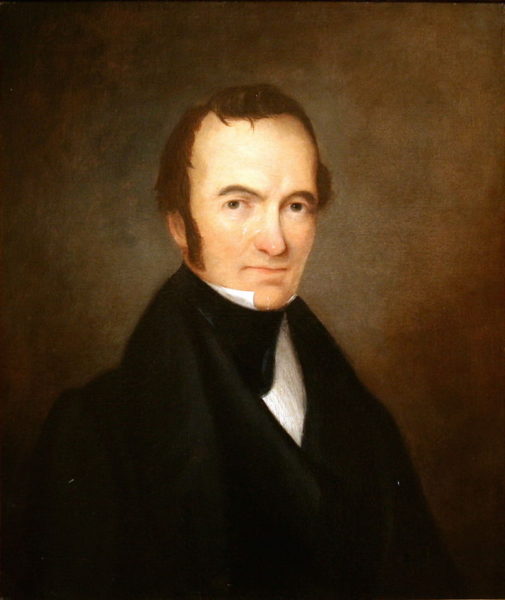 In 1821, Mexico won independence from Spain, and the Mexican government encouraged Anglo-American settlers to move into the province of Texas. As they entered Karankawa territory, there were frequent violent confrontations between the natives and the settlers. The Mexican authorities tried to protect the colonists by making peace with the Karankawas, but were not successful. Also in 1821, during his first trip to Texas, Stephen F. Austin expressed a view of the Karankawa that objectified them as cannabalistic savages and de-humanized them entirely, even though his initial encounter with the Cocos had been peaceful. He wrote:
In 1821, Mexico won independence from Spain, and the Mexican government encouraged Anglo-American settlers to move into the province of Texas. As they entered Karankawa territory, there were frequent violent confrontations between the natives and the settlers. The Mexican authorities tried to protect the colonists by making peace with the Karankawas, but were not successful. Also in 1821, during his first trip to Texas, Stephen F. Austin expressed a view of the Karankawa that objectified them as cannabalistic savages and de-humanized them entirely, even though his initial encounter with the Cocos had been peaceful. He wrote:
These Indians and the Karankawas may be called universal enemies to man – they killed off all nations that came in their power, and frequently feasted on the bodies of their victims. The approach of an American population will be the signal of their extermination for there will be no way of subduing them but extermination.
Stephen F. Austin (1821)
There is additional written evidence, from other nineteenth century Anglo-American settlers that may indicate that the tribe practiced cannibalism, eating the flesh of their traditional enemies as part of ceremonial rituals. Some sources indicate that this custom may have been widespread among Texas tribes and that it involved consuming small pieces of the flesh of their dead or dying enemies. If true, this may have been seen as the ultimate revenge or as a magical means of capturing the spirit and courage of their enemies. However, reports by white settlers like this are unsubstantiated by other sources, and cannibalism was likely asserted to legitimize the campaign to exterminate the Native Americans. According to historians, there is little direct evidence to support the claim that the Karankawa were cannibalistic.
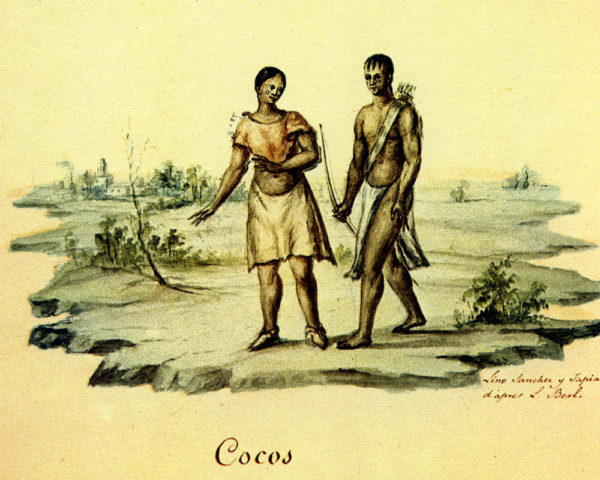 After several years of raids and spirals of violence, the Karankawa negotiated a treaty with Austin’s colony in late 1824. In return for an end to the attacks on the tribe by the colonists, the Karankawa agreed to abandon their use of the lower Brazos, lower Colorado and lower Lavaca rivers and to stay west of the Guadalupe River. However, this was a difficult proposition for them because there were other Native American tribes already living in that area. In September 1825, Austin accused the Karankawa of breaking the treaty and gave orders to his militia to pursue and kill any Indians that were found east of the Guadalupe River. The official campaign of extermination ended in 1827, and another treaty was established between Austin’s colony and the Karankawa. A year later, when French naturalist Jean-Louis Berlandier visited Texas, there were only about 100 Karankawa families remaining.
After several years of raids and spirals of violence, the Karankawa negotiated a treaty with Austin’s colony in late 1824. In return for an end to the attacks on the tribe by the colonists, the Karankawa agreed to abandon their use of the lower Brazos, lower Colorado and lower Lavaca rivers and to stay west of the Guadalupe River. However, this was a difficult proposition for them because there were other Native American tribes already living in that area. In September 1825, Austin accused the Karankawa of breaking the treaty and gave orders to his militia to pursue and kill any Indians that were found east of the Guadalupe River. The official campaign of extermination ended in 1827, and another treaty was established between Austin’s colony and the Karankawa. A year later, when French naturalist Jean-Louis Berlandier visited Texas, there were only about 100 Karankawa families remaining.
By the time Texas became an independent republic in 1836, the Karankawa tribes were so depopulated that they were no longer considered a credible enemy, and only a few remnants of the tribe remained. Nevertheless, in 1840, Karankawa who were camped on the Guadalupe River below Victoria, were attacked by Texans, in retaliation for prior Karankawa raids on Anglo-American settlers. The surviving Karankawa fled south along the coast, settling about fifty miles southwest of Corpus Christi. In the middle of the 1840s, the tribe split, with some Natives settling on Padre Island and some moving further south to Tamaulipas, Mexico, in an attempt to escape pressure from the rapid increase in the Texas 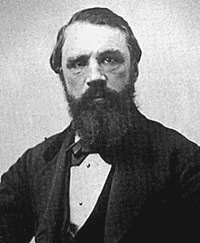 population. However, they could not avoid conflict south of the Rio Grande either. The Karankawa were accused of atrocities in the Reynosa area, and the tribe was repeatedly attacked by the Mexicans.
population. However, they could not avoid conflict south of the Rio Grande either. The Karankawa were accused of atrocities in the Reynosa area, and the tribe was repeatedly attacked by the Mexicans.
In the late 1850s, the Karankawa were again displaced and pushed back into Texas. They settled in the vicinity of Rio Grande City, but they were not welcomed by local residents. It is said that in 1858, the legendary Mexican military leader, outlaw and folk hero Juan Nepomuceno Cortina (1824-1894) and a group of other rancheros annihilated the last of the Karankawa tribe at a site called Cayo del Oso. It’s not known for sure if that is true or if it was just a rumor, but by the 1860s, the Karankawa Indians were essentially extinct. Some few may have fled to Mexico or joined other Native American tribes, but in the end, the Karankawa “fell victim to rapid American colonization and direct exterminatory warfare.”
While it was largely believed that the Karankawas became extinct, a 2021 issue of the Texas Tribune (reference 4) included an article that brings to light a small number of Indigenous descendants who call themselves Karankawa Kadla, where “kadla” means culturally mixed. One of their leaders is Love Sanchez, a woman who grew up in Corpus Christi and who co-founded the nonprofit organization, Indigenous Peoples of the Coastal Bend. The group includes around 100 members who were able to find each other using social media and the internet. Most who self-identify as Karankawa Kadla have had to piece their heritage together using family oral histories, DNA testing, and the small amount of documentation available in historical archives and at missions. They formed an organization called the Indigenous Peoples of the Coastal Bend and have set up a website and blog at https://karankawas.com.
In 2021, the Indigenous Peoples of the Coastal Bend filed a suit against the oil company Moda Midstream that was seeking to challenge the Clean Water Act to gain a permit to expand a crude oil export terminal in Corpus Christi. Moda Midstream was bought out by Enbridge Ingleside for $3 billion in the fourth quarter of 2021. In May 2022, it was announced that Enbridge Ingleside would postpone start of construction until after October 2022. See reference 6. The most recent status I could find on the suit in the Climate Change Litigation Database shows that the plaintiffs filed a response to a cross-motion for summary judgement in August 2022. I believe that the litigation is likely still ongoing.
P.S. Andy and I once drove from Houston down to Corpus Christi along the coast and there are many great places to spend time bird watching. There are so many different bird migration paths that go right across this region, so I definitely recommend checking it out.
UPDATE: This blog post was updated on August 15, 2023 to describe more recent information about Karankawa descendants and their suit against the Army Corp of Engineers, to add references 4 through 7, and to make minor editorial changes.
Reference 1: Selin, Shannon, “The Extinct Karankawa Indians of Texas.” Shannon Selin: Imagining the Bounds of History, shannonselin.com/2017/01/extinct-karankawa-indians-texas, January 2017.
Reference 2: Lipscomb, Carol, “Karankawa Indians.” Handbook of Texas Online, accessed September 20, 2020, www.tshaonline.org/handbook/entries/karankawa-indians, published by the Texas State Historical Association.
Reference 3: Shackelford, C. E., Rozenburg, E.R., Hunter, W.C., and Lockwood, M.W., “Migration and the Migratory Birds of Texas: Who They Are and Where They Are Going.” Texas Parks and Wildlife PWD BK W7000-511 (11/05,) Booklet, 34pp, 2005.
Reference 4: Douglas, Erin, “The Karankawa were said to be extinct. Now they’re reviving their culture – and fighting to protect their ancestors’ land,” Texas Tribune, October 4, 2021. Kara
Reference 5: Seitler, Tim, “Karankawas Sue U.S. Army Corp of Engineers,” blog post at Karankawas: Peoples of the Gulf Coast website, https://karankawas.com/2021/08/04/karankawas-sue-u-s-army-corps-of-engineers/ August 4, 2021.
Reference 6: Seiter, Tim, “Enbridge Construction Halted,” blog post at Karankawas: People of the Gulf Coast website, https://karankawas.com/2022/05/13/enbridge-construction-halted/, May 13, 2022.
Reference 7: Indigenous Peoples of the Coastal Bend versus U.S Army Corp of Engineers, Climate Change Litigation Database, Sabin Center for Climate Change Law · U.S. Litigation Chart made in collaboration with Arnold & Porter Kaye Scholer LLP.
Image 1: Carancahueses. Watercolor sketch by Mexican Scientific Illustrator and Survey Artist, Lino Sánchez y Tapia (unknown-1838.)
Image 2: Lucas, Antonio. Portrait of Pánfilo de Narváez, “De conquistador a esclavo: la odisea de Cabeza de Vaca, el primer blanco que cruzó el sur de EEUU,” El Mundo, April 8, 2018.
Image 3: Unknown Artist, Portrait of Álvar Núñez Cabeza de Vaca, Wikimedia Commons, December 11, 2014, public domain.
Image 4: Unknown Artist, 19th-century engraving, Portrait of Rene-Robert,Cavelier, Sieur de La Salle.
Image 5: Unknown Artist, Portrait of Stephen F. Austin, circa 1836, Texas State Library and Archives Commission, via Wikimedia Commons, public domain.
Image 6: Cocos. Watercolor sketch by Mexican Scientific Illustrator and Survey Artist, Lino Sánchez y Tapia (unknown-1838.)
Image 7: Juan Nepomuenco Cortina, Wikimedia Commons, public domain, earlier than 1894.















1 Comment
Leave your reply.